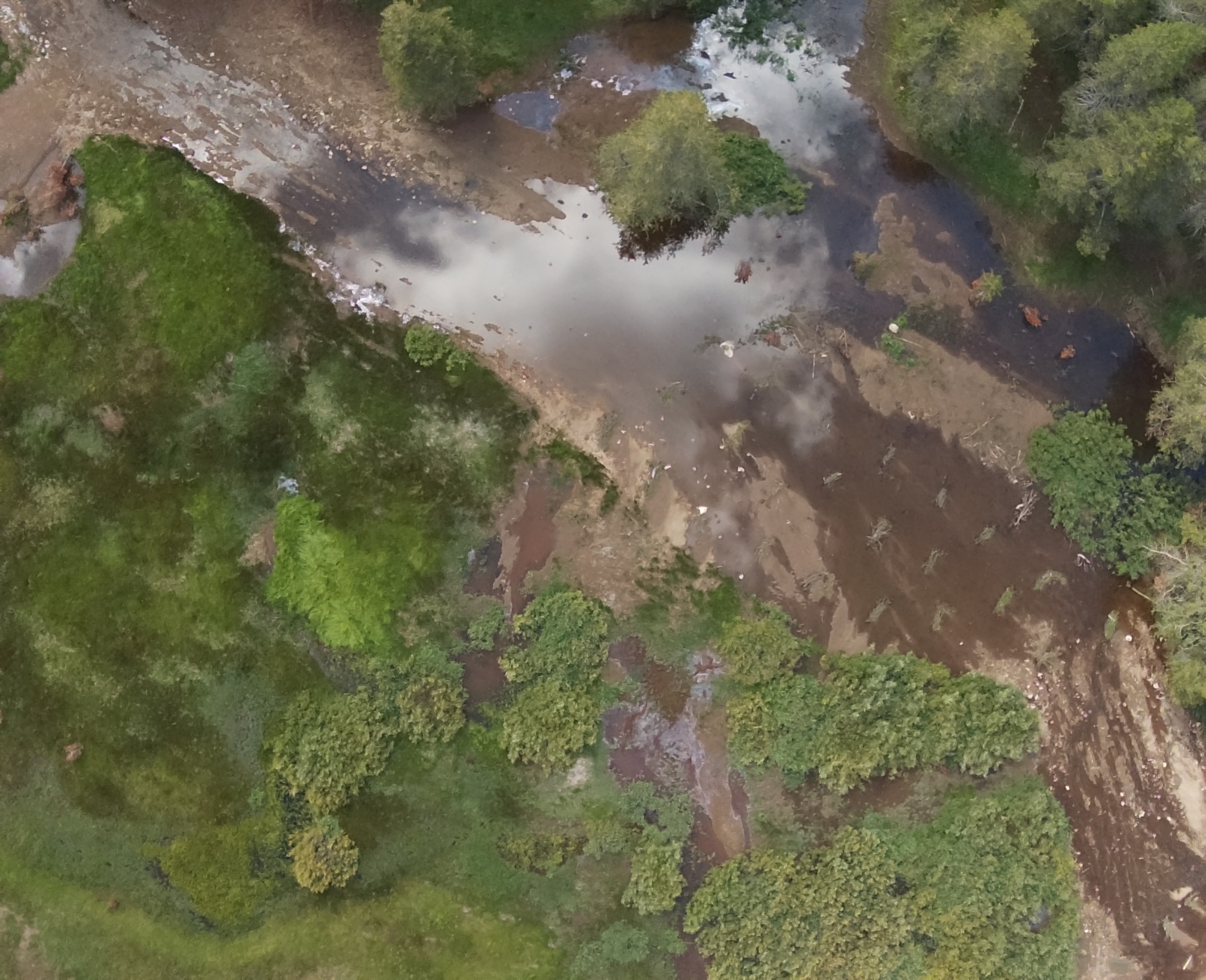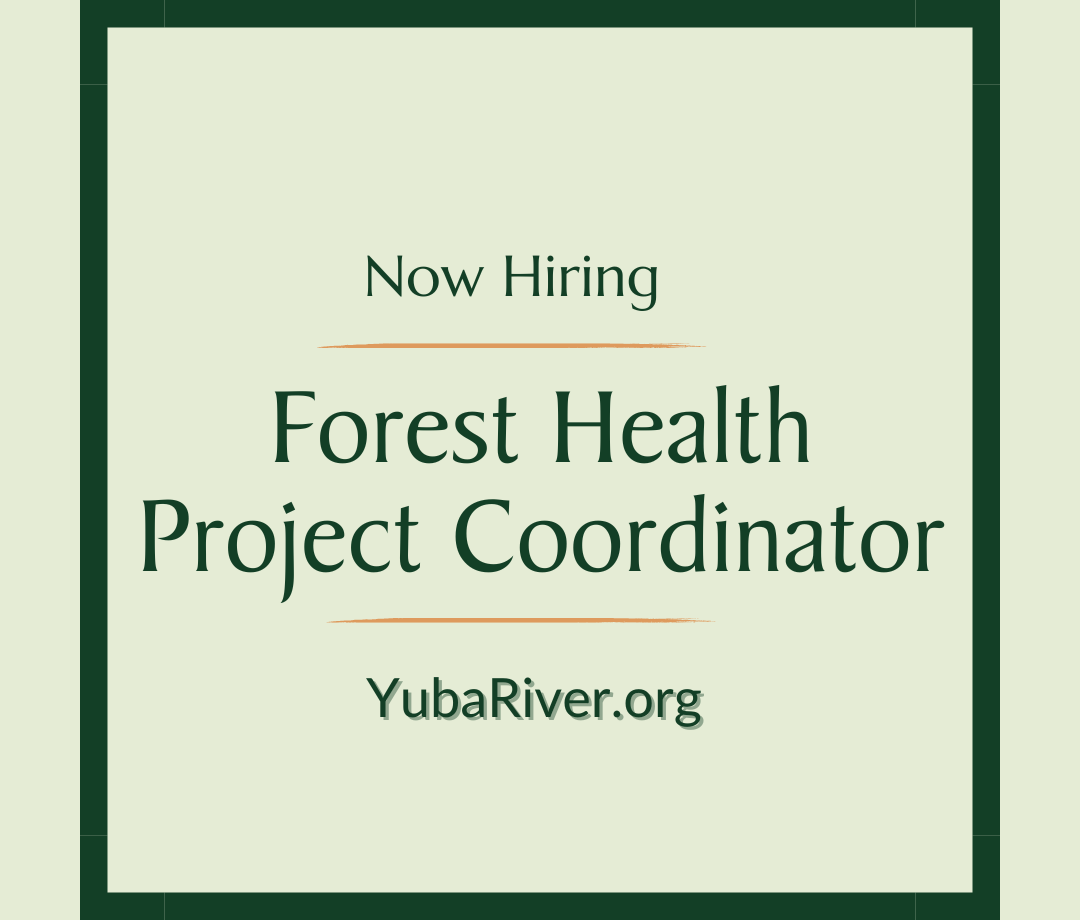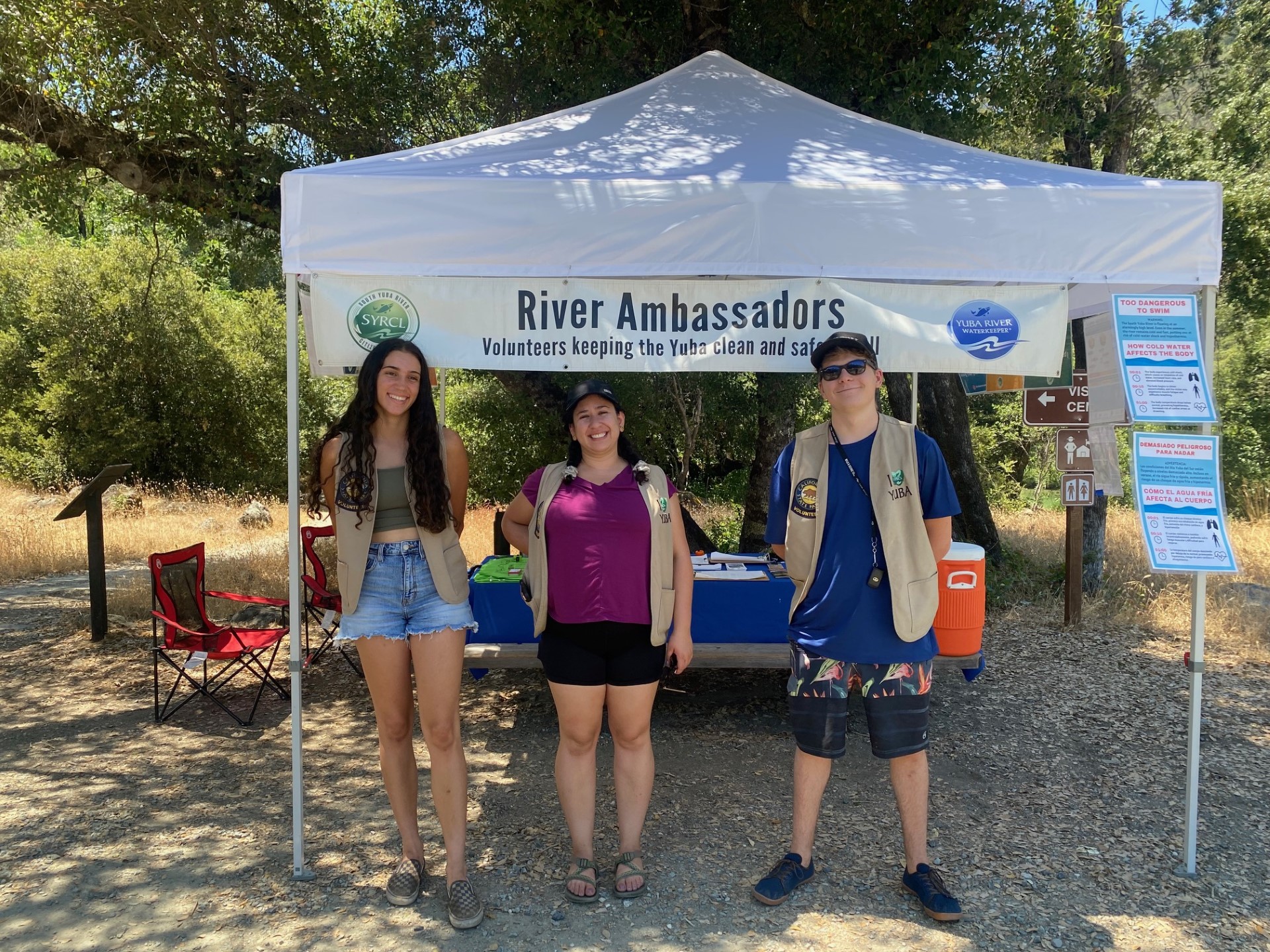The Bay Delta and Yuba: Native American Tribes, Water Rights, and Cultural Uses
The Bay-Delta plan presents the State Water Resources Control Board with an opportunity to not only restore the health of the Bay-Delta, but also to recognize the water rights of tribes who were “first in time” to steward the land we all stand on.
“First in time, first in right….”
–Doctrine of prior appropriation
The “first in time, first in right” principle didn’t apply to California’s first people, and it still doesn’t apply today. The principle of “prior appropriation” meant that water was to be used and water rights bestowed to the first person who used it for mining or other “beneficial” purposes. The rule asserts that the first person to extract a quantity of water from a source for a “beneficial use” had the entitlement to continue using that amount of water for that purpose. Later, users could use the remaining water for their needs if they didn’t infringe on the rights of earlier users.
The “earlier users,” of course, did not include Indigenous People.
This doctrine of prior appropriation was born during the California Gold Rush era when miners needed water for mining activities. However, as agriculture developed and became a major part of the economy, irrigating crops played a significant role in shaping water rights; especially during periods of drought when supplies may be limited.
California’s indigenous tribes thrived by hunting and gathering the plentiful resources of the land and viewed themselves as caretakers rather than the owners of those resources. In fact, their culture made them stewards of the land and resources, sustainably preserving them for the future. Water was and remains a sacred element in Native American culture. The new settlers, however, didn’t bring the same view of the land and water. They were there to find their fortune, after all. Driven by the allure of prosperity, miners harnessed the power of rivers to wash away hills and mountains in their relentless pursuit of gold. This marked the beginning of a new era in California that led to lasting environmental impacts that are still evident in the present day.
“When we talk about protecting the health of our rivers and watersheds, we are simultaneously talking about protecting and preserving our culture, our indigenous lifeways, and our identities. Culture is ecology and ecology is culture. It’s all the same.”
Malissa Tayaba, Shingle Springs Band of Miwok Tribe
“To us and our Tribe, it’s a living being with a personality, with wants and wishes and needs, and it’s not okay to exploit those things.”
Shelly Covert, Spokesperson for the Nevada City Rancheria Nisenan Tribe,
The denial of water rights to Indigenous People in California was not an oversight. It was a strategic and calculated plan by affluent landowners and legislators to block these original residents of their rights.
The Decline of the Bay Delta: Cultural Survival
Fast forward 150 years, and, today, Native American Tribes in the Delta cannot practice their traditional ceremonies and activities safely due to poor water quality that is caused by the lack of freshwater flow. This shortage of freshwater flow has put the BayDelta on the brink of collapse, has degraded the natural habitat of many species, and the quality of life for Delta communities.

The Yuba to Delta Connection
Water from the Yuba flows into the Feather River and then into the Sacramento River, eventually reaching the Delta. But this is where most of the water stops and is exported into two large water storage and delivery systems: the federal Central Valley Project and California’s State Water Project. Additionally, dams in the Sierra Nevada store water in the winter for crops and generate power in the summer; crucially, this alters the timing and amount of water that reaches the Delta. Together, all these diversions make a noticeable reduction in the amount of water that reaches the Delta and the Bay and the ocean. As well, the change in timing doesn’t align with the biological needs of native species.
Between 1980 and 2021, in wet years, about 50% of available water flowed through the Delta. In dry water years, less than 10% of that water flows to the ocean.
Lack of water flow in the Delta causes harmful algal blooms that produce toxins and deplete the oxygen in the water. These blooms are spreading throughout the Delta — harming tribal practices, killing fish, and impacting the well-being of surrounding communities. Native fish populations, such as Chinook salmon, are collapsing, threatening the sustenance food sources and cultural survival of tribes and disadvantaged communities that depend on them in the Bay-Delta. The cumulative impacts of lack of freshwater, poor water quality, and the loss of salmon, cultural traditions, and ceremonies threaten the cultural survival and future of Native American Tribes.
The Bay-Delta Plan: Balancing Many Uses and Needs
Recognizing that populations of native species are in substantial decline and that the key stressors include lack of flow and degraded water quality, the State Water Resources Control Board, the agency in charge of the water quality and beneficial uses of the Delta, is making updates to the Bay-Delta plan intended to establish water flow and other measures to protect native species. The best available science shows that what the Delta and salmon need is water flows. The Bay Delta Plan is aimed at protecting and balancing the beneficial uses of water in the watershed, including recreation, drinking, irrigation, and fish habitat.
While the best science is needed to work on these issues, the updates to the Plan also need to acknowledge Native American water rights, recognize the cultural beneficial uses of water, and include collaboration with Native American Tribes.
Water Rights
The history and complexity of California’s water rights laws run deep, especially the interaction between state water law and tribal water rights. California has different types of rights, including riparian (property-based rights where the land touches a waterway), appropriative (priority based on who put the water to “beneficial use” first), and federally reserved rights. It is in the context of this complex water rights landscape that Tribes have to advocate for their water rights.
Here in California, there are 109 federally recognized Native American Tribes. In addition, there are more than 80 Native American Tribes that are currently not recognized by the federal government but receive some acknowledgment from the State. Finally, there are over 300 Native American allotments located on reservations and in the public domain.
Two landmark cases established principles that federally reserved Native American lands have rights to use sufficient water – similar to California’s riparian rights – and those rights cannot be destroyed by state law or water users acting under state law. Under the federal system, the water rights of a tribe depend on two factors: the time when the federal government reserved the land (the priority date) and the water quantity required to accomplish the main reason for which the land was reserved. But this process doesn’t help many of California’s Tribes who don’t have federal recognition.
Native American Tribes have urged the State Water Resources Control Board to address and quantify tribal water rights, explaining that ignoring the water rights of tribes pre-empts the Board and tribal authorities from making “equitable, reliable, and long-term water usage plans.”

Tribal Cultural Uses
Tribal cultural uses or “beneficial uses” (TBUs) are designated water uses in the Bay-Delta Plan that protect the activities and traditions of Native American tribes and their relationship with water, such as fishing, gathering, ceremonial, and cultural practices. TBUs could provide explicit recognition and reasonable protection of tribal water rights and cultural uses. Therefore, meaningful tribal engagement and collaboration in the planning and implementation processes is paramount.
By including tribal beneficial uses in the Bay-Delta Plan, these cultural uses would be acknowledged and safeguarded within the plan’s scope. As a matter of fact, the Draft Staff Report acknowledges the need for more consultation with tribes to incorporate these critical cultural uses into the Plan.
Indigenous Knowledge and Science
In the Bay-Delta Plan, Indigenous Knowledge is also known as “Tribal Ecological Knowledge” (TEK). This is a type of knowledge that comes from tribal individual and community experience of observing, learning, innovating, practicing, and believing in ways that support ecological sustainability and natural resource management through interaction between humans and the environment. In the context of the Bay-Delta Plan, this knowledge cannot be gained or acquired through the extraction of facts. It can only be transferred through meaningful and respectful collaboration that honors what Tribes choose to share.
The Plan and process should have protections in place to protect the integrity and confidentiality of the shared Indigenous Knowledge. This also respects the sovereignty of Native American Tribes and their right to control access to their cultural and intellectual property.
Summary
The State Water Resources Control Board needs to consider the incorporation of Tribal water rights, Tribal Beneficial Uses, and Tribal Ecological Knowledge in the Bay-Delta Plan. The Draft Staff Report should be revised to establish and ensure the protection of Tribal Beneficial Uses, set standards for harmful algae blooms, and address the problem that insufficient freshwater flows are a main factor in destroying native fish habitat and causing these algae blooms.
The Bay-Delta Plan is a critical opportunity to revive the health of the Bay-Delta and restore our native fisheries. The Plan should ensure that the water quality and water quantity are sufficient to support the beneficial uses of Native American Tribes, Delta communities, and native fish species.
The Plan must guarantee the water’s journey through the Delta to the Golden Gate.
Ensuring adequate freshwater flow is not just about water rights or supply but also about preserving our state’s rich biodiversity and Native American cultural heritage.
Native American Presentation to the Board
Native American Tribes and representatives presented these ideas to the State Water Resources Control Board in November of 2023. You can view their presentations at this link:
Comments Due: January 19th
Comments on the Draft Staff Report are due on January 19, 2024
Email: SacDeltaComments@waterboards.ca.gov with the subject: “Comment Letter – Sacramento/Delta Draft Staff Report.”
Mail: State Water Resources Control Board Division of Water Rights Attn: BayDelta & Hearings Branch P.O. Box 100, Sacramento, CA 958122000
For more information: See the State Water Resources Control Board page:
Bay-Delta Watershed Comp Review | California State Water Resources Control Board
See also the Boards updated comment period notice for the Draft Staff Report here:
Revised NOA/Public Comment/Hearing/Workshop for Staff Report on Bay-Delta Updates (ca.gov)
For further information, please contact: Traci Sheehan, Policy Manager, South Yuba River Citizens League (SYRCL) at traci@yubariver.org
Learn more:
This is SYRCL’s fourth piece in a series exploring the connection of the Yuba River to the Bay-Delta:
- The Yuba River and the Bay Delta: From Source to Sea — The Journey of Yuba Water to the Golden Gate • SYRCL
- The Yuba River and the Bay Delta: A Vital Connection for Salmon • SYRCL
- The Yuba River and the Bay Delta: A Vital Connection for Salmon and our Communities • SYRCL
More background:
Did you enjoy this post?
Get new SYRCL articles delivered to your inbox by subscribing to our ENews.




